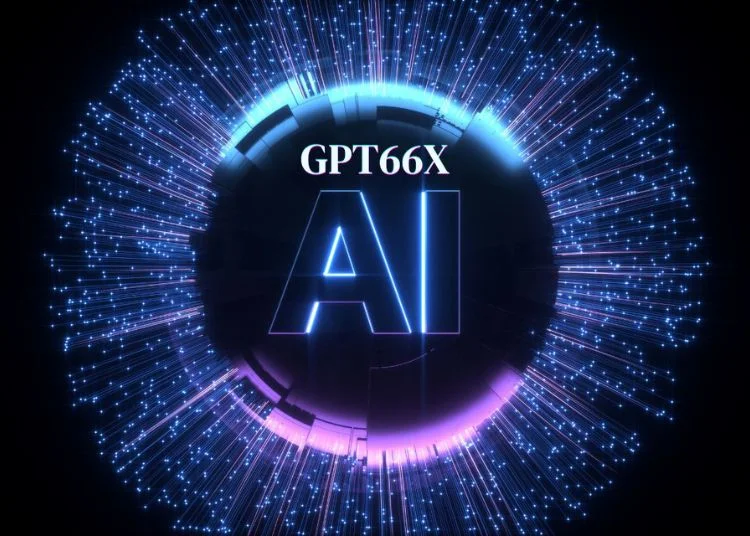In the ever-evolving landscape of artificial intelligence (AI), the emergence of GPT-66X stands as a testament to the relentless pursuit of innovation. With its inception, a new era has dawned upon us, one where machines transcend mere tools and become companions in our quest for knowledge and understanding. In this article, we delve deep into the capabilities, implications, and potential of GPT-66X, a marvel poised to reshape industries and redefine the boundaries of what AI can achieve.
The Genesis of GPT-66X
GPT-66X, shorthand for Generative Pre-trained Transformer 66X, represents the culmination of years of research, development, and refinement in the field of natural language processing (NLP). Building upon its predecessors, GPT-3 and subsequent iterations, GPT-66X pushes the boundaries of AI capabilities to unprecedented heights.
Developed by a team of brilliant minds at OpenAI, GPT-66X harnesses the power of deep learning and neural networks to comprehend, generate, and manipulate human-like text with unparalleled precision and sophistication. Its architecture boasts an intricate web of interconnected nodes, each meticulously calibrated to mimic the complexities of human cognition.
Unraveling the Capabilities
At its core, GPT-66X is a marvel of versatility, capable of performing a myriad of tasks with remarkable efficiency. From generating creative content to aiding in complex decision-making processes, its applications span across industries and disciplines.
In the realm of content creation, GPT-66X shines as a beacon of creativity. Armed with a vast repository of knowledge gleaned from the depths of the internet, it crafts prose, poetry, and even music that rivals the ingenuity of human creators. Whether it’s drafting marketing campaigns, composing symphonies, or penning novels, GPT-66X stands as a formidable ally for those seeking to push the boundaries of artistic expression.
Moreover, GPT-66X serves as a potent tool for information synthesis and analysis. In an age inundated with data, its ability to sift through vast troves of information, distill key insights, and present them in a coherent manner is invaluable. From aiding researchers in their quest for scientific breakthroughs to assisting policymakers in formulating evidence-based strategies, GPT-66X empowers individuals and organizations to navigate the complexities of the modern world with confidence and clarity.
The Ethical Imperative
However, the rise of GPT-66X also raises profound ethical questions that demand careful consideration. As AI systems become increasingly adept at mimicking human behavior, concerns regarding authenticity, misinformation, and algorithmic bias come to the forefront.
The sheer power wielded by GPT-66X necessitates robust safeguards to ensure its ethical and responsible use. Transparency, accountability, and inclusivity must be prioritized at every stage of development and deployment. Additionally, efforts to mitigate biases and foster diversity within AI systems are paramount to ensuring equitable outcomes for all.
Furthermore, the advent of GPT-66X underscores the importance of ongoing dialogue and collaboration between technologists, ethicists, policymakers, and society at large. Only through collective engagement and shared responsibility can we harness the transformative potential of AI while safeguarding against its unintended consequences.
Navigating the Future
As we stand on the precipice of a future shaped by AI, the journey ahead is fraught with both promise and peril. GPT-66X, with its unparalleled capabilities and far-reaching implications, serves as a harbinger of the profound transformations yet to come.
In the years ahead, the integration of GPT-66X into our daily lives will continue to blur the lines between human and machine, challenging preconceived notions of intelligence, creativity, and consciousness. From revolutionizing education and healthcare to reimagining entertainment and commerce, its impact will reverberate across every facet of society.
Yet, amidst the excitement and anticipation, we must remain vigilant. The ethical dilemmas posed by GPT-66X underscore the need for a thoughtful and principled approach to AI governance. Only by upholding the values of transparency, accountability, and equity can we harness the full potential of GPT-66X while safeguarding against its unintended consequences.
Conclusion
In closing, the emergence of GPT-66X heralds a new chapter in the ongoing saga of human ingenuity and technological advancement. With its unparalleled capabilities and profound implications, it invites us to reimagine the possibilities of AI and chart a course towards a future defined by collaboration, innovation, and shared prosperity.
As we harness the power of GPT-66X to confront the challenges of tomorrow, let us do so with humility, empathy, and a steadfast commitment to the values that define us as a society. For in the convergence of human intellect and artificial intelligence lies the promise of a brighter, more inclusive future for all.

